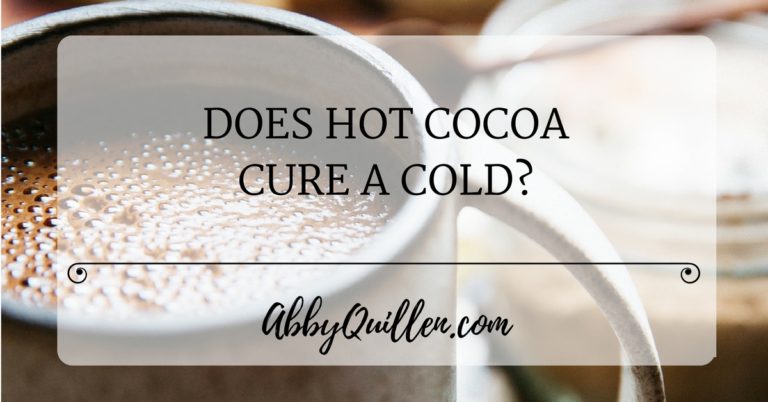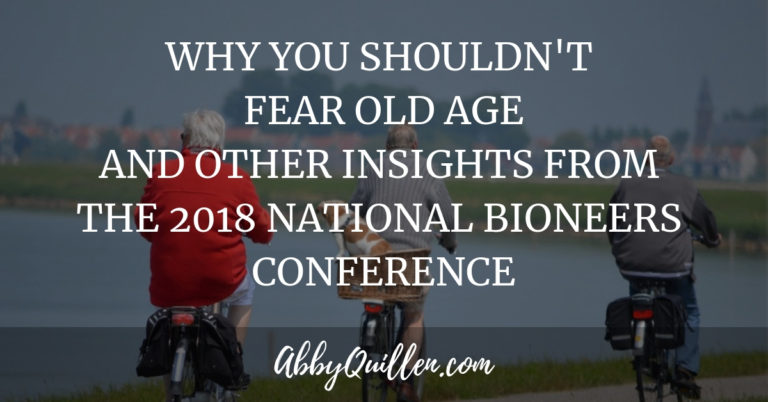Becoming Carcinogen Abolitionists
“I look back on the life of Abraham Lincoln, whose portrait hangs in every schoolroom in Illinois, and marvel that our economy was once dependent on slave labor. Unthinkable. I believe our grandchildren will look back on us and marvel that our economy was once dependent on chemicals that were killing the planet and killing ourselves.” – Sandra Steingraber
A couple of weeks ago, I saw Living Downstream, a documentary based on the life and research of Sandra Steingraber. Steingraber, a biologist and author, was diagnosed with bladder cancer at 20 and believes she is part of a cancer cluster in her hometown in Tazewell County, Illinois, where “three dozen different industries line the river valley and farmers practice chemically intensive agriculture along its floodplains.”
After Steingraber was diagnosed with cancer, her doctors told her it was a fluke. But when she consulted the scientific literature, she discovered that bladder cancer is “considered a quintessential environmental cancer, meaning that we have more evidence for a link between toxic chemical exposures and bladder cancer risk than for almost any other kind of cancer.” For instance scientists had known for decades that certain textile dyes cause bladder cancer in humans. Not only are these dyes still in use, they are present in the groundwater of Steingraber’s hometown.”The disconnect between what we in the scientific community know about carcinogens and what cancer patients are told is huge,” Steingraber says.
In the next thirty years, Steingraber went on to become a cancer survivor, receive her PhD, write several popular books and dozens of articles, and speak all over the world. She became a passionate “carcinogen abolitionist.”
I’ve long admired Steingraber’s writing in Orion, and her message is resonating with me more than ever right now for a variety of reasons. Despite Richard Nixon famously declaring war on cancer in 1971, cancer is on the rise. Recently my sister-in-law and several friends have been diagnosed with cancer in their early forties.
Where I live in Eugene, researchers have identified two cancer clusters – an elevated rate of leukemia around the Baxter creosote factory and elevated numbers of lung cancer cases near the Union Pacific railroad yards. These two neighborhoods have something in common with the Illinois county where Steingraber grew up: they’re populated by low-income people. I’ve known two families who lived near the Baxter plant. Both complained about fumes that kept them awake at night. The Oregon Toxics Alliance was started, because children at a school in the Baxter neighborhood were crying and begging to come inside from recess because of plumes of noxious gases in the air. I’m convinced that no one, regardless of income, should be forced to breathe toxic chemicals.
Moreover, over the last two years, I’ve embarked on a personal project that’s made me reflect on our society’s reliance on synthetic chemicals. I replaced shampoo, conditioner, cosmetics, bug sprays, and cleaning products with simple, cheap, nontoxic ingredients (baking soda and vinegar, in most cases), eliminating the majority of toxic chemicals from my home. What surprised me the most about the process? The simple ingredients work better.
That’s right, those products I once used, which are loaded with questionable ingredients, are unnecessary. Yet the majority of people continue to use them. The average home contains 62 toxic chemicals. Why? Advertising? Lobbying? They don’t know about the alternatives? Could those things also partly explain the reliance on chemicals by industrial agriculture, forestry, landscape management, etc.? Maybe. For instance we often hear that chemical-intensive farming methods are a necessary evil if we want to feed the ballooning world population. But on the contrary, a U.N. report released in March reveals that by switching to small-scale, sustainable agriculture, we could not only feed the world, we could double food production.
The widespread commercial use of numerous synthetic chemicals is a recent phenomenon culminating after World War II. Babies born in the 1950s were the first generation of newborns exposed to multiple synthetic chemicals in the womb. In other words, it is a grand experiment, one that I’m increasingly convinced is failing.
Steingraber is a powerful advocate for eliminating the chemicals linked to cancer, early puberty, miscarriages, and birth defects. She’s a talented writer and one of the most moving speakers I’ve ever heard. Yet, I’ve noticed that many people have a hard time embracing her message.
When I excitedly told a friend about the showing of Living Downstream and showed him the above trailer, he reacted the way I think many people do. He said, “You’re going to watch that? It looks really depressing.”
Then I posted the movie trailer on Facebook, and someone wrote. “Great, now I have to stop drinking water and breathing.”
I can relate to these sentiments. My generation has been bombarded with environmental fears since we were born. Every nature video and discussion in grade school invariably ended with human-wrought devastation – the diminishing ozone layer, acid rain, rapidly-growing endangered species and extinction lists. By the time I was in high school, the word carcinogen meant little to me. When our teachers and parents lectured us that cigarettes were carcinogens, my friends and I shrugged. What wasn’t a carcinogen – from the water we drank to the sun we depended on for life?
So I understand why many of us might feel environmentally-fatigued and why Steingraber’s call for us to become carcinogen abolitionists could be falling on deaf ears. We tend to want a checklist of things we can do to protect ourselves and our kids from disease – eat organic, exercise, replace our household cleaners, avoid tobacco, breastfeed, eat less animal fat. Steingraber advocates all of the above, but she also makes it clear that we can not do this on our own.
“I am a conscientious parent. I am not a HEPA filter. If organophosphate pesticides are damaging children’s brains at background levels of exposure and above, they should be abolished,” she writes.
She is convinced that we have to join together, we have to speak out, we have to contact our representatives, we have to support organizations like the Oregon Toxics Alliance. We have to unify against some of the most powerful industries in the country and rebuild our society and economy. That’s not an easy message.
Yet I find it hopeful. Remember the eco-problems we kids were bombarded with in the eighties – acid rain, the ozone layer, lead poisoning? We tackled those. The EPA’s Acid Rain Program forced factories and automobiles to reduce emissions, helping to improve the pH of precipitation. Developed countries phased out ozone-depleting substances, and evidence suggests the ozone layer is regenerating. Laws banning the use of lead in house paint and gasoline mean that kids have six times less lead in their bodies than they did 30 years ago. How did we accomplish these environmental successes? By addressing the problems and working together to solve them. I hope Steingraber is right and we can also become carcinogen abolitionists.
I am betting that my children—and the generation of children they are a part of—will, by the time they are my age, consider it unthinkable to allow cancer-causing chemicals, reproductive toxicants, and brain-destroying poisons to freely circulate in our economy. They will find it unthinkable to assume an attitude of silence and willful ignorance about our ecology.
Wishful or not, I am determined to win this bet because my children’s lives are inextricably bound to the abiding ecology of this planet, which is worth everything I could possibly wager. An environmental human rights movement is the vision under which I labor, from which I am not free to desist, and which may, if we all work together, become a self-fulfilling prophecy.
Want to learn more about Sandra Steingraber and her work? Check out her website or the following:
- 3 Bets, Orion, May/June 2009
- Mind Games, Orion, March/April 2011
- Interview with Sandra Steingraber, The Ecologist, Nov. 30, 2010
- Environmental Cancer Risk, On Point With Tom Ashbrook, NPR, May 12, 2010


Consider this shared. I just recently purchased a book of healthy alternatives for all sorts of things, from shampoo to window cleaner. I’m not just excited about the chemical-free nature of them but also about the simple cost savings.
Thanks for your comment, Lauren, and thanks for sharing the article.
I am a retired chemist and spent my entire career in various aspects of synthetic organic chemistry. I feel the necessity to defend the field. The science of chemistry has led to many useful products and this needs to be recognized. I strongly recommend that Ms. Steingraber obtain and read the book: DENIALISM by Michael Specter (ISBN 978-1-59420-230-8) for a more balanced outlook.
Thanks Dick. I thought you might have a comment on this as a retired chemist. I don’t know about Ms. Steingraber, but I’ll definitely take a look at the book. Thanks for the recommendation.
Coincidentally, I read today that the American Academy of Pediatrics is calling for tougher regulations on the chemicals in consumer products. Here’s the article, if anyone’s interested:
http://www.latimes.com/news/nationworld/nation/la-na-kid-chemicals-20110425,0,2822745.story
Thank you for the article. I, too, am profoundly inspired by Sandra Steingraber. If one heard her speak here in Eugene, I think one would have a sense of her respect for science and the good things it has accomplished. But even a long list of achievements does not negate the frightening amount of toxics that circulate in our environment, our food and our bodies as a result of the commercialization of post-World-War-II chemicals of warfare.
On a different note, a friend of mine asked me last night if I had read “The Omnivore’s Dilemma” saying that she is afraid to read it because she won’t be able to eat anything afterward – similar sentiment as some of your commenters. If our government did a better job of regulating industrial and personal use of toxins thereby necessitating reliance on different, healthier means of production of everything, we would not feel that we must choose between eating, breathing and drinking water, AND our health.
Thanks for bringing more attention to these critical issues that affect us all….mostly unwittingly!
Thanks so much for your comment, Ann.
Thanks for the link to AAP article. I think that some responsibility always resides with the purchaser/consumer of any product, pediatric or otherwise. If one has questions and/or doubts about the ingredients in a product, one should question the manufacturer directly, and, if still unsatisfied, contact the FDA (Federal Drug Administration) or the ACS (American Chemical Society). This can sometimes be frustratingly slow, but is better than trusting the “rumor mill” for crucial information.